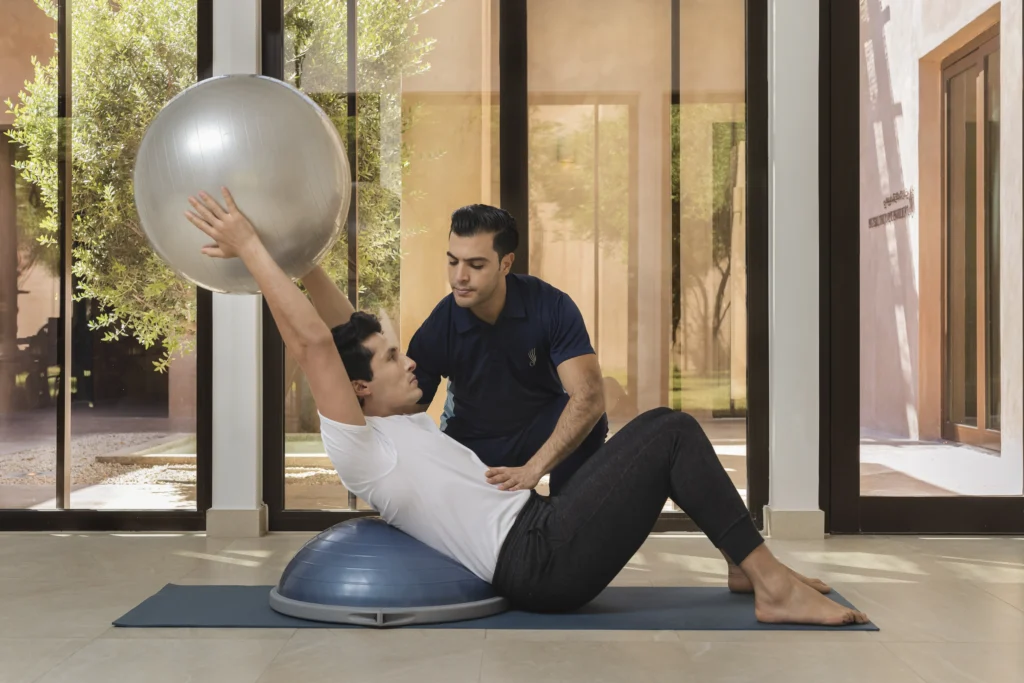What Movements Should I Avoid When Dealing with Certain Physical Pains?
What movements should I avoid with lower back pain?
Avoid
- Heavy lifting: This can strain your lower back even further. If lifting is necessary, use proper techniques such as bending at the knees and keeping your back straight.
- Twisting motions: Twisting while lifting or turning quickly can exacerbate lower back pain. Try to move your whole body rather than just your torso.
- Prolonged sitting: Sitting for extended periods can increase pressure on the spine. Make sure to take breaks, stand up, and stretch regularly.
What movements should I avoid with neck pain?
Avoid
- Looking down for long periods: This can strain the neck muscles. Try to keep your computer screen at eye level and use supportive pillows while sleeping.
- Sudden, jerky movements: Fast, unexpected movements can aggravate neck pain. Move slowly and with control.
- Overhead activities: Lifting or reaching overhead can strain the neck. If you must perform these activities, ensure your movements are deliberate and not excessively forceful.
What movements should I avoid with knee pain?
Avoid
- Deep squats: Squatting too deeply can put excessive pressure on the knee joint. Opt for shallower squats or try wall sits to strengthen the muscles without overloading the joint.
- High-impact activities: Running or jumping can exacerbate knee pain. Consider low-impact exercises like swimming or cycling instead.
- Kneeling: Prolonged kneeling can irritate the knee joint. Use kneeling pads or avoid kneeling positions if possible.
What movements should I avoid with shoulder pain?
Avoid
- Overhead lifting: Lifting weights or objects overhead can stress the shoulder joint. Modify exercises to avoid overhead motions.
- Repetitive arm movements: Repeating the same shoulder motion can worsen pain. Incorporate rest periods and vary your activities.
- Heavy pushing or pulling: These actions can strain the shoulder muscles. Use proper body mechanics and consider lighter weights or assistance for such tasks.
What movements should I avoid with wrist pain?
Avoid
- Repetitive motions: Activities like typing or using a mouse can worsen wrist pain. Take frequent breaks and use ergonomic equipment.
- Over-extending the wrist: Bending the wrist back too far (e.g., in certain yoga poses) can aggravate pain. Perform wrist exercises within a comfortable range of motion.
- Heavy gripping: Holding onto objects tightly can increase wrist strain. Use tools with padded grips and avoid excessive force.
What movements should I avoid with hip pain?
Avoid
- High-impact exercises: Activities like running or jumping can intensify hip pain. Low-impact exercises such as swimming or walking may be better options.
- Cross-legged sitting: Sitting with legs crossed can strain the hip joint. Opt for sitting positions with feet flat on the ground.
- Extreme hip flexion: Deep bending or high kicks can worsen hip pain. Modify activities to avoid excessive bending.
What movements should I avoid with plantar fasciitis?
Avoid
- Walking barefoot on hard surfaces: This can exacerbate heel pain. Wear supportive shoes or cushioned insoles.
- High-impact exercises: Running or jumping can aggravate plantar fasciitis. Choose low-impact activities like swimming or cycling.
- Prolonged standing: Standing for long periods can increase pain. Take breaks and shift your weight or use supportive mats if standing is unavoidable.
NB: Always consult with a healthcare professional for personalized advice, especially if you’re dealing with persistent or severe pain. Adjusting your movements and activities can help manage pain and prevent further injury.









